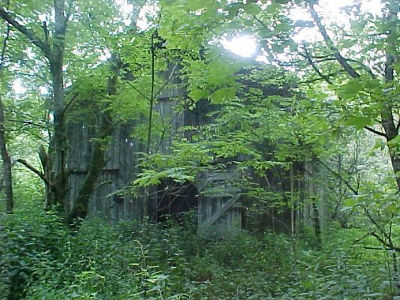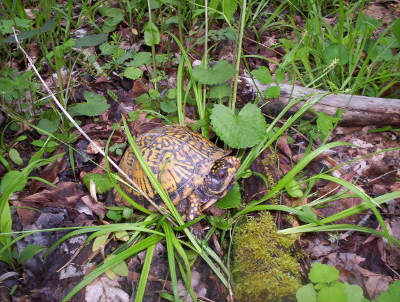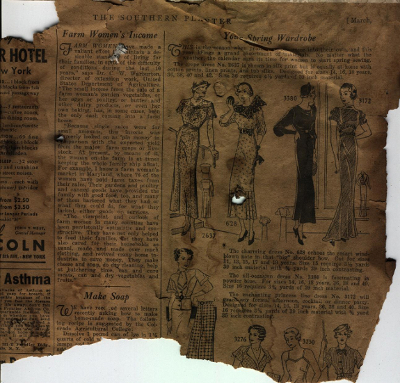
Love at first sight
 (If you haven't already,
you'll want to start with part
1 and part
2 from the very beginning of Growing
Into a Farm.)
(If you haven't already,
you'll want to start with part
1 and part
2 from the very beginning of Growing
Into a Farm.)
After reading my endless letters about this farm dream (and about
rototillers, seeds, and chickens), my college friend, Melissa,
decided to put me out of my misery. Melissa used her
computer-programming skills to join Amazon.com in its infancy, so
by 2003, her stock options provided a healthy sum she hadn't
expected. "How would you feel if I bought into your farm
idea?" Melissa asked. "We could use my money to purchase it
sooner, I'd own half of it, so the farm could be bigger, and you
could pay me back over the course of ten years with a no-interest
loan."
To anyone else, this
offer would sound almost too good to be true, but I was fiercely
independent back in 2003. I'd held off on dating anyone
since I figured a man would only stand in the way of allowing me
to achieve my dream of roughing it on a farm, and I didn't want to
be beholden to anyone. However, Melissa was (and still is)
one of the few chinks in my armor. The two years we'd shared
at college (before she graduated and went off to help Amazon build
an empire) were some of the happiest of my life, and anything that
made our post-college diaspora likely to reverse, bringing Melissa
closer to my Appalachian stomping grounds, was fine by me.
 So I accepted Melissa's
kindness and started hunting for property. I knew I wanted
water, at least an acre of arable land, and lots of space between
me and my neighbors— everything else was optional. By the
time I stumbled across an ad for 58 acres on Sinking Creek, I felt
like I'd been on a dozen blind dates with grossly incompatible
partners. There was the mountainside acreage completely
covered in kudzu, the recent hillside clearcut with tree carcasses
littering the ground and soil already eroding away, and the
$300-per-acre tract that was poisoned by runoff from a coal
strip-mine.
So I accepted Melissa's
kindness and started hunting for property. I knew I wanted
water, at least an acre of arable land, and lots of space between
me and my neighbors— everything else was optional. By the
time I stumbled across an ad for 58 acres on Sinking Creek, I felt
like I'd been on a dozen blind dates with grossly incompatible
partners. There was the mountainside acreage completely
covered in kudzu, the recent hillside clearcut with tree carcasses
littering the ground and soil already eroding away, and the
$300-per-acre tract that was poisoned by runoff from a coal
strip-mine.
When I showed up at
Sinking Creek, I actually walked through the wrong property
first. There was no for-sale sign in evidence—my land-to-be
had been on the market for so long that everyone had forgotten
about it—and the realtor's instructions were vague. But I
finally backtracked and ended up in the right spot, where wood
frogs, chorus frogs, and spring peepers had combined their calls
into a symphony reverberating across the damp floodplain. I
had to park along the county road and trek up a right-of-way for
about half a mile, fording a creek and sinking up to my knees in
the swamp, but I finally came around a bend and saw a huge tobacco
barn towering through the trees.
I was barely able to
push my way through the blackberries and honeysuckle to reach the
old house, half of which had collapsed with age, but once I got
there, the peace was overwhelming. I couldn't see or hear
any signs of human life, although bird songs had joined the frog
chorus and flowers were scattered across the hillsides.
Finally, the far-off rumble of a coal train reminded me that
humanity existed...but at a distance. It was love at first
sight.
 The world's worst
bargainer, I tried to talk the realtor down from the already
low-ball figure of $600 per acre. Despite my rose-tinted
glasses, I was well aware that most of the land was good for
nothing by human standards, and that the long, wet driveway was
going to be a thorn in my side for years to come. For a few
months, I pretended to myself (and to the realtor) that I was
going to go elsewhere, but I didn't look at any other land—the
Sinking Creek farm had already won over my imagination.
The world's worst
bargainer, I tried to talk the realtor down from the already
low-ball figure of $600 per acre. Despite my rose-tinted
glasses, I was well aware that most of the land was good for
nothing by human standards, and that the long, wet driveway was
going to be a thorn in my side for years to come. For a few
months, I pretended to myself (and to the realtor) that I was
going to go elsewhere, but I didn't look at any other land—the
Sinking Creek farm had already won over my imagination.
By November, I was
planting ginseng seeds on a north-facing slope, and soon
thereafter, Melissa sent me a cashier's check so I could close on
the property. I was $17,000 in debt and 58 acres rich.
I thought I'd reached
the happily-ever-after stage of my love story, but as anyone who's
been in an actual relationship knows, tying the knot is only the
beginning. Luckily for me, my dating experience had all been
in secondhand, book form, so I wasn't jaded enough to foresee the
future. I figured the land and I would work together
seamlessly, I'd be relishing homegrown apples in no time, and jobs
were a thing of the past. Ah, the innocence of youth.
Stay tuned for the next installment tomorrow, or read
the entire book here.
| This post is part of our Growing into a Farm lunchtime series.
Read all of the entries: |
Want more in-depth information? Browse through our books.
Or explore more posts by date or by subject.
About us: Anna Hess and Mark Hamilton spent over a decade living self-sufficiently in the mountains of Virginia before moving north to start over from scratch in the foothills of Ohio. They've experimented with permaculture, no-till gardening, trailersteading, home-based microbusinesses and much more, writing about their adventures in both blogs and books.
Want to be notified when new comments are posted on this page? Click on the RSS button after you add a comment to subscribe to the comment feed, or simply check the box beside "email replies to me" while writing your comment.
- Remove comment
